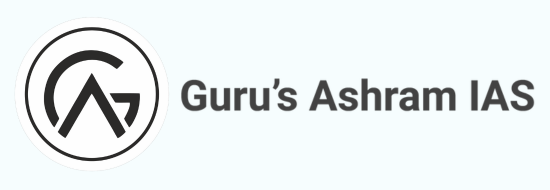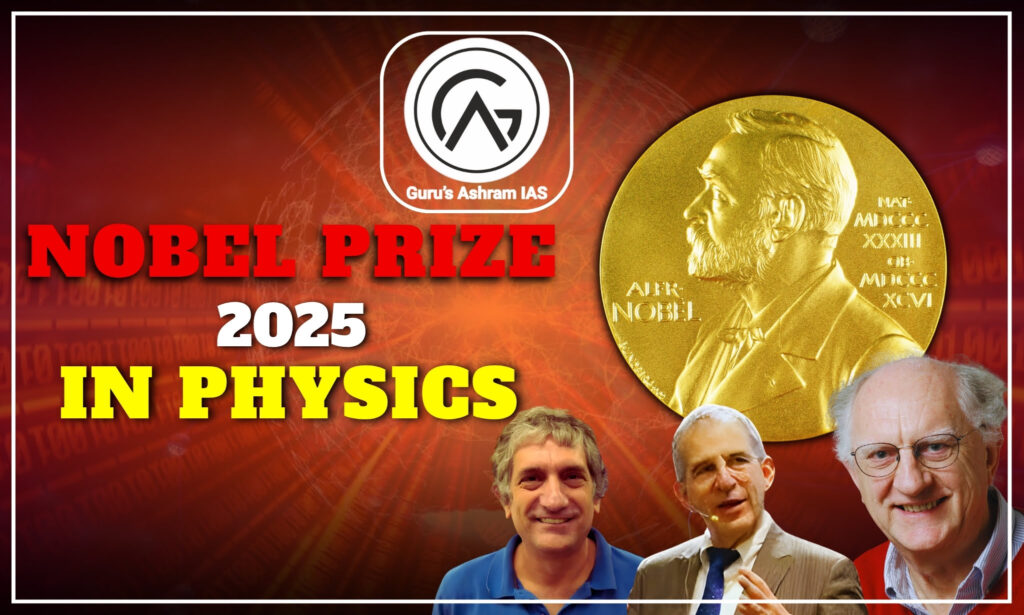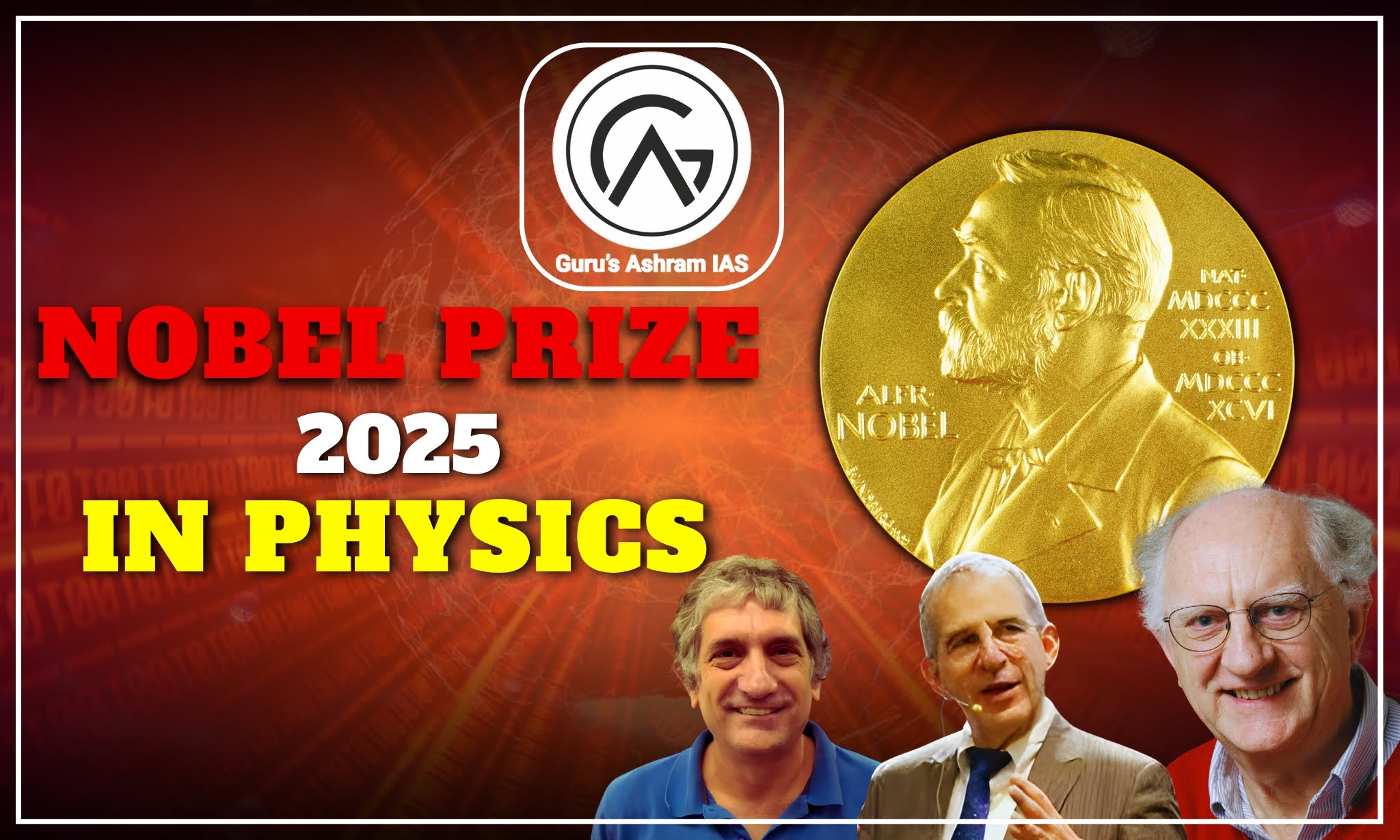Nobel Prize in Physics 2025
The Royal Swedish Academy of Sciences has awarded the Nobel Prize in Physics 2025 to John Clarke, Michel Devoret, and John Martinis for their groundbreaking discovery of macroscopic quantum mechanical tunnelling and energy quantization in electrical circuits. This work has paved the way for the development of superconducting circuits, which hold immense potential to revolutionize fields such as quantum computing, sensor technology, and cryptography. The Nobel Prize in Physics 2025 winners list features these three scientists, as announced on the Nobel Prize in Physics 2025 date of October 7, 2025, and detailed in the Nobel Prize in Physics 2025 explained release.
Key Highlights of the Award Macroscopic Quantum Tunnelling:
Macroscopic Quantum Tunnelling:
- The award recipients extended the concept of quantum tunnelling from the microscopic level to macroscopic systems.
- They demonstrated that large-scale systems, such as superconducting circuits, can exhibit quantum properties like tunnelling and energy quantization.
- This discovery is significant in bridging the gap between quantum mechanics and classical physics.
Superconducting Circuits and Josephson Junction:
- The researchers utilized superconducting materials to develop Josephson junctions, where billions of Cooper pairs act as a collective quantum entity.
- When cooled to near absolute zero (-273°C), the electrical states in these circuits were observed to “tunnel” through energy barriers, confirming quantum behaviour. The John Clarke physics Nobel Prize recognizes his pivotal contributions to these experiments.
Evidence of Quantum Behaviour:
- This discovery provides evidence of applying quantum mechanics principles to large-scale systems, contrary to classical physics.
- It enabled the development of superconducting qubits, which form the foundation of quantum computing, a key highlight in the Nobel Prize in Physics 2025 list.
Quantum Tunnelling: Concept and Importance
- Quantum tunnelling is a process where particles pass through an energy barrier that, according to classical physics, they should not be able to cross. This is possible due to wave-particle duality, where a particle’s wave function extends beyond the barrier, creating a probability of the particle appearing on the other side. This principle is central to the Nobel Prize in Physics 2025.
Key Features:
- Wave-Particle Duality: Every particle exhibits both wave-like and particle-like properties.
- Probability Principle: Tunnelling is based on probability, a fundamental principle of quantum mechanics.
- Energy Barrier: Particles can cross barriers without sufficient energy, defying classical physics.
Applications of Quantum Tunnelling
Quantum Computing:
-
- Superconducting qubits utilize quantum tunnelling to exist in multiple states simultaneously, enabling quantum algorithms to perform computations faster than classical computers.
- Useful for solving complex problems like large-scale data analysis and drug design, driven by the innovations of who won the Nobel Prize in Physics 2025.
Scanning Tunnelling Microscope (STM):
- Used for mapping surfaces at the atomic level, crucial for materials science and nanotechnology.
Flash Memory:
- Employed in USB drives and SSDs for data storage through electron tunnelling.
Josephson Junction:
- Consists of two superconductors separated by a thin insulator, where electrons tunnel to create a precise relationship between current and voltage.
- Used in Superconducting Quantum Interference Devices (SQUID) and highly sensitive measurements.
Nuclear Fusion:
- Tunnelling enables atomic nuclei to overcome repulsive forces, forming the basis for energy production in the Sun and experimental reactors.
Significance of the Nobel Prize Scientific Importance:
- This discovery has linked quantum mechanics to practical applications, driving a revolution in quantum technology.
- Superconducting circuits are the foundation for quantum computers and sensors, shaping future technologies, as emphasized in the Nobel Prize in Physics winners legacy.
Economic and Strategic Importance:
- Cryptography: Quantum computers can potentially break traditional encryption systems, necessitating new cybersecurity solutions.
- Industrial Applications: Quantum sensors and simulations will advance fields like healthcare, energy, and materials science.
Global and Indian Context:
- Globally, countries like the USA, China, and the European Union are heavily investing in quantum technology.
- India’s National Quantum Mission (NQM): Launched in 2020, it aims to develop a functional quantum computer by 2031, positioning India as a global leader in quantum technology.
- Economic Impact: Quantum technology will boost India’s digital economy and defence sector.
Conclusion:
The Nobel Prize in Physics 2025, announced as the Nobel Prize in Physics 2025 on October 7, marks a historic step in applying quantum mechanics at a macroscopic level. The discoveries by John Clarke, Michel Devoret, and John Martinis—the who got Nobel Prize in Physics 2025—have paved the way for advancements in superconducting circuits, enabling breakthroughs in quantum computing and sensor technology. For India, investing in quantum technology through the National Quantum Mission is strategically and economically vital. Unlike the Nobel Prize in Physics 2024, which recognized AI advancements, this year’s prize focuses on quantum tunnelling. While Nobel Prize in Physics 2025 nominees and nominations remain confidential, the selection surpassed many Nobel Prize in Physics 2025 predictions.
UPSC Mains Exam: Potential Questions
Questions 1: How can quantum technology become the foundation of the 21st-century technological revolution? Discuss its potential and challenges in the context of India’s National Quantum Mission. (250 words)
Questions 2: How do scientific discoveries like macroscopic quantum tunnelling impact socio-economic development and national security? Analyze with examples. (250 words)
Questions 3: What contributions has the 2025 Nobel Prize in Physics made to the field of quantum computing? Explain the significance of superconducting circuits and Josephson junctions. (250 words)
Questions 4: What is quantum tunnelling? Highlight its key applications, particularly in quantum computing and cryptography. (150 words)
Questions 5: How can India’s National Quantum Mission contribute to global leadership in quantum technology? Discuss its challenges and opportunities. (250 words)
Questions 6: How can quantum computing pose a threat to traditional cryptographic systems? Evaluate its impact on India’s cybersecurity strategy. (150 words)
Questions 7: How can quantum technology transform defence and strategic sectors? Discuss its relevance in the Indian context. (250 words)
Essay Questions for UPSC Mains Exam:
Question: “The Future of Quantum Technology and India’s Role”, “The Socio-Economic Impact of Scientific Discoveries”.
UPSC Prelims Exam: Potential Questions with Explanations
Question 1: The 2025 Nobel Prize in Physics was awarded for which discovery?
- a) Study of Quantum Entanglement
b) Macroscopic Quantum Tunnelling and Energy Quantization
c) Development of Superconducting Materials
d) Development of Quantum Cryptography
Answer: b) Macroscopic Quantum Tunnelling and Energy Quantization
Explanation:
- The 2025 Nobel Prize in Physics was awarded to John Clarke, Michel Devoret, and John Martinis for their discovery of macroscopic quantum tunnelling and energy quantization. This work demonstrated quantum behaviour in superconducting circuits, forming the basis for quantum computing.
Question 2: Which of the following devices uses the principle of quantum tunnelling?
- a) Laser Printer
b) Scanning Tunnelling Microscope (STM)
c) Optical Fiber
d) Solar Panel
Answer: b) Scanning Tunnelling Microscope (STM)
Explanation:
Quantum tunnelling allows particles to pass through energy barriers, which is utilized in the Scanning Tunnelling Microscope (STM) to map surfaces at the atomic level via electron tunnelling.
Question 3: The Josephson junction, related to the 2025 Nobel Prize in Physics, is useful for which of the following?
- Superconducting Quantum Interference Device (SQUID)
- Qubits in Quantum Computing
- Ultra-Sensitive Measurements
Select the correct option:
- a) Only 1 and 2
b) Only 2 and 3
c) Only 1 and 3
d) 1, 2, and 3
Answer: d) 1, 2, and 3
Explanation:
A Josephson junction consists of two superconductors separated by a thin insulator, enabling electron tunnelling. Its applications include:
- SQUID: Used for ultra-sensitive magnetic field measurements, such as in magnetoencephalography.
- Qubits in Quantum Computing: Essential for building superconducting qubits.
- Ultra-Sensitive Measurements: Used for precise voltage and current measurements, like establishing voltage standards.
Question 4: The process of quantum tunnelling is based on which of the following principles?
- a) Newton’s Third Law of Motion
b) Wave-Particle Duality
c) Second Law of Thermodynamics
d) Electromagnetic Induction
Answer: b) Wave-Particle Duality
Explanation:
- Quantum tunnelling relies on wave-particle duality, where a particle’s wave function extends beyond an energy barrier, creating a probability of crossing it.
Question 5: What is the objective of India’s National Quantum Mission?
- a) Establishing a human mission to the Moon by 2030
b) Developing a functional quantum computer by 2031
c) Achieving global leadership in artificial intelligence
d) Achieving self-reliance in renewable energy
Answer: b) Developing a functional quantum computer by 2031
Explanation:
- The National Quantum Mission (NQM), launched in 2020, aims to develop a functional quantum computer by 2031 and establish India as a global leader in quantum technology, focusing on computing, communication, sensors, and cryptography.
Question 6: Which of the following is NOT an application of quantum tunnelling?
- a) Nuclear Fusion
b) Flash Memory
c) Superconducting Qubits
d) Conventional Hard Disk Drive
Answer: d) Conventional Hard Disk Drive
Explanation:
Quantum tunnelling has applications in:
- Nuclear Fusion: Enables atomic nuclei to overcome repulsive forces.
- Flash Memory: Used in USB drives and SSDs for data storage via electron tunnelling.
- Superconducting Qubits: Enables quantum computing by allowing qubits to exist in multiple states.
- Conventional Hard Disk Drives: Operate on magnetic fields, not quantum tunnelling (though modern drives may use tunnelling magnetoresistance, which is not conventional).
Question 7: Which scientists were awarded the 2025 Nobel Prize in Physics?
- John Clarke
- Michel Devoret
- John Martinis
Select the correct option:
- a) Only 1 and 2
b) Only 2 and 3
c) Only 1 and 3
d) 1, 2, and 3
Answer: d) 1, 2, and 3
Explanation:
- The 2025 Nobel Prize in Physics was jointly awarded to John Clarke, Michel Devoret, and John Martinis for their contributions to macroscopic quantum tunnelling and energy quantization, advancing superconducting circuits and quantum computing.





